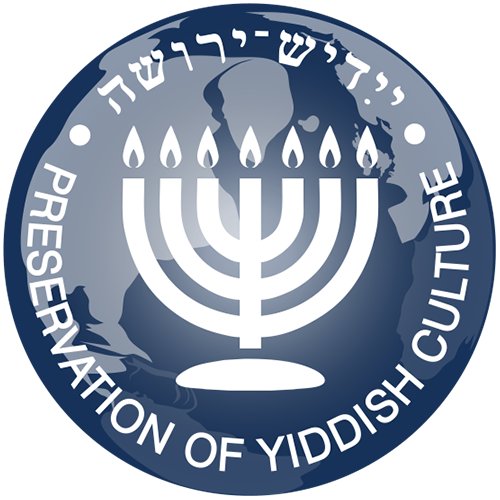Our Mission
Yiddish is the language that used to be spoken by the Ashkenazi Jews of Eastern and Central Europe. Not only Jews, but many educated people in general are aware of this fact. Perhaps, some of them have also encountered the term Yiddishland. It is the name of the traditional territory where this language emerged and developed for over a thousand years and where most of its speakers used to live.
However, only a few people today would be able to seriously discuss Yiddish culture or to name at least a dozen of its numerous outstanding representatives: writers, poets, artists, composers, whose works have become world treasures. Few people know that special artistic techniques and images that originated in Jewish shtetls have also won international fame. Moreover, the creators of Yiddish culture were not only Jews. For example, Dmitri Shostakovich, a great 20th century composer, was not Jewish.
Many people today are familiar with Sholom Aleichem’s masterpieces translated into different languages, but there are many Yiddish literatury figures of the same magnitude. Not everyone also knows, for example, that Marc Chagall’s painting style is largely permeated with the musical intonations and daily life of the Yiddish shtetl.
Many people still believe that as a result of WWII and the Holocaust, which claimed the lives of six millions of Yiddish native speakers, the language fell into disuse, which could also mean that the culture based on it is merely a historical artifact of a bygone era.
Such thinking is a big mistake. The history of the 1000-year-old Yiddish culture still continues to develop. We are not only talking here of such striking examples as the outstanding prose writer Isaac Bashevis Singer, whose works were awarded in 1978 with the Nobel Prize in Literature, or that one of the most famous Broadway musicals, Fiddler on the Roof, is based on Sholom Aleichem’s stories about Tevye the Dairyman. Yiddish is studied nowadays in more than a hundred universities around the whole world; there are Yiddish theaters in several countries; a number of large scientific and educational organizations try their best to ensure that the language continues to flourish in all its diversity. And, imporantly, for hundreds of thousands of religious Jews Yiddish remains the primary language of their everyday conversation.
Thus said, we believe that just learning the language does not mean full immersion into the Yiddish culture. And vice versa: no full-fledged Jewish education is possible without understanding the value and features of this great heritage, which has become a part of world culture.
An invaluable contribution to the development and preservation of Yiddish culture has been made by the YIVO Institute for Jewish Research, which has been conducting academic and educational work for many decades. The Blavatnik Archive (New York), where a huge number of documents are collected, including ones directly related to the culture and history of the language, is working toward the same direction. The National Yiddish Book Center in Amherst (Massachusetts) is a unique center of Yiddish research and the world’s largest repository of Yiddish books.
Our Yiddish Heritage Preservation project has been developing in recent years in several countries under the auspices of two foundations: The Heritage Projects Foundation (USA) and Yiddish Heritage Preservation Foundation (Israel). It aims to achieve the same goals, but in a unique way.
The author of the project and the creator of both foundations, Dr. Mark Zilberquit, a public figure, author and publisher of art books, sees the mission of this project in three main aspects:
• search for forgotten or little-known Yiddish culture phenomena and their study;
• education;
• involvement.
The first aspect includes searching for and preserving archival documents, works of literature, paintings and music belonging to the Yiddish culture that were considered irretrievably lost. Our task is to make them accessible for study and breathe new life into them.
The second aspect involves the creation of educational programs, textbooks and manuals in printed and electronic form in order to build an educational process for studying the history of the most important phenomena in Yiddish culture. This also includes publishing collected works, periodical academic, literary and art publications, stimulation and support of creativity in Yiddish, organization and holding of music festivals, exhibitions, conferences.
The third aspect is involvement and its task is to arouse interest in Yiddish culture among young people, to involve them in its preservation and development. In particular, we are focusing on their participation in research, performance of musical works and, of course, in the study of the language itself. For this goal, our foundations have established special scholarships, the first of which have already been taken by Tel Aviv University, where Yiddish culture will be studied according to our guidelines.
As a symbolic gesture of this new momentum in the development of Yiddish culture and education, a monument dedicated to Sholom Aleichem will be installed on the university campus. The project is sponsored by the same two foundations and will be implemented very soon.
One of the first results of the foundations’ activities was the creation of this international information portal: Yiddish-Culture.com. Uniquely, this site attempts to combine the most important information about everything that is happening in today’s Yiddish culture and education with some basic knowledge about its history and practical means for learning the language itself. Whenever possible, all materials are translated into several languages, especially Yiddish.
This site will feature previously unpublished and rare materials, including the results of recent discoveries. Work on our Internet portal is just beginning. We hope that both the academic environment and everyone who is interested in Jewish history and culture will benefit from it.
